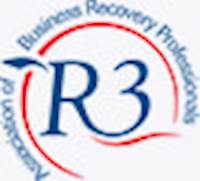The Pre-insolvency Moratorium in Brief
The Pre-insolvency Moratorium offers viable, pre-insolvency companies temporary protection from creditor legal action (winding-up petitions etc.) for a period of 20 business days. Allowing directors time to investigate and discuss with creditors options aimed at restructuring company debt accumulated prior to the Pre-insolvency Moratorium.
This happens under the reassuring guidance and monitoring of an Insolvency Practitioner (the monitor). The Insolvency Practitioner ensures the company is eligible for a moratorium and will continually assess that it will result in the company being rescued as a going concern.

A pre-insolvency moratorium allows time to discuss with creditors options aimed at restructuring company debt.
Key pre-insolvency moratorium business benefits:
- A Moratorium is designed to protect a business while plans are developed; either to put in place a financial restructuring, a CVA or an Arrangement or Reconstruction to rescue the company as a going concern.
- The Moratorium allows the directors to retain control of the company while the company continues to trade, and it provides a breathing space from creditors to allow various options to be pursued in rescuing the company as a going concern.
- To assist, prior to entry into a Moratorium, in devising an exit strategy that will result in the rescue of the company as a going concern.
- To review and assess the appropriateness of a Moratorium and advise and assist the Company in relation to its affairs and business prior to the appointment of a Monitor.
- The Moratorium protects the assets and trade of the business from any enforcement or legal action.
- The Moratorium helps to preserve goodwill and the value of the business by protecting it from action while a strategy is formulated and agreed.
- It prevents the enforcement of security over the company’s property.
- It also prevents the repossession of goods in the company’s possession under a hire-purchase agreement.
- It prevents the appointment of an Administrator by a floating charge holder.
A pre-insolvency moratorium is ideal for resolving pre-insolvency situations where:
- A company has had a winding-up petition filed against it and needs a ‘breathing space’ to collect book debts, or secure investment either from shareholders or funding.
- A company has had multiple statutory demands, county court judgements (CCJs) and enforcement or bailiff action taken against it and the company needs protection from creditors for a temporary period whilst the situation is resolved.
- A company is still trading and has sufficient cashflow to pay debts as and when due, but not its historic debts at the moment. However, with time the situation could be resolved with or without a CVA or restructuring plan.
The above list is not an exhaustive one.
If you would like to talk to someone about the suitability of a pre-insolvency moratorium for your company please contact us 0121 201 1720 for a confidential and no obligation discussion. As licensed insolvency practitioners we are well versed in resolving pre-insolvency and formal insolvency situations.
Pre-insolvency Moratorium Process
Entry into a moratorium is achieved by the directors of a company lodging ‘relevant documents’ at court (Greenfield Recovery Limited can assist with these). These are:
- a notice that the directors wish to obtain a moratorium.
- a statement from the proposed monitor that the person is qualified and consents to act.
- a statement from the proposed monitor that the company is an eligible company.
- a statement from the directors that, in their view, the company is, or is likely to become, unable to pay its debts.
- a statement from the proposed monitor that, in the proposed monitor’s view, it is likely that a moratorium for the company would result in the rescue of the company as a going concern.
It is important to note that, during the moratorium, a company must display the name of the monitor and that a moratorium is in force for the company on each and every website and business document issued by or on behalf of the company. All business premises must also display notice of the moratorium.




